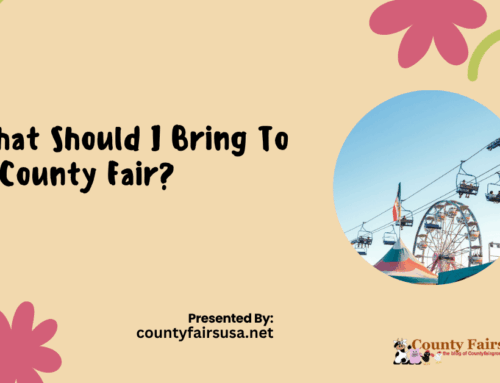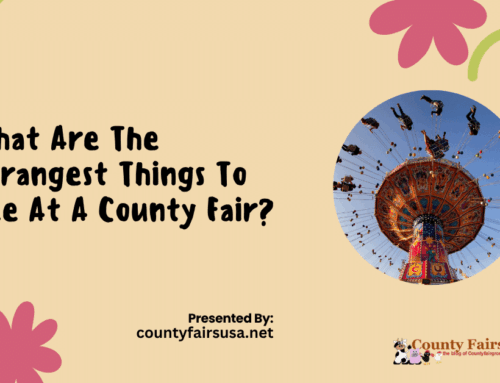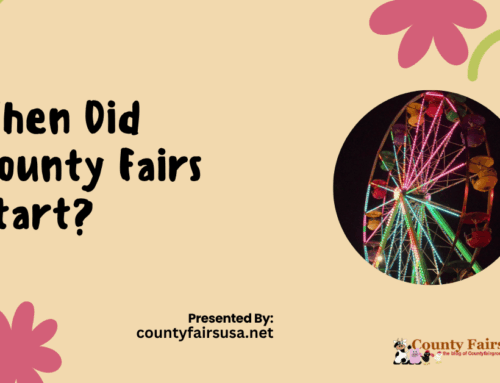County fairs are more than nostalgic summer outings filled with cotton candy and carnival rides. They serve as vibrant, temporary marketplaces that inject energy and revenue into local economies. Whether it’s a small rural community or a growing suburban town, these fairs carry significant financial and social weight.
Economics of County Fairs: Who Benefits and How
But who really gains from the fairgrounds? Let’s look at how money circulates through these events and uncover the true beneficiaries of the county fair economy.
The Revenue Engine Behind County Fairs
Organizing a county fair is a substantial financial undertaking. From booking performers to setting up booths and maintaining sanitation, the costs add up quickly. Fortunately, revenue streams are diversified and often sufficient to support the scale of these events.
Where the Money Comes From
Most county fairs generate income through a mix of sources:
- Ticket Sales: Entry fees are a major revenue contributor, especially for larger fairs with headliner entertainment.
- Vendor Booth Rentals: Food trucks, craftspeople, and retailers pay to secure a spot, hoping to attract large crowds.
- Sponsorships: Local banks, insurance companies, or regional brands often sponsor parts of the fair for marketing exposure.
- Parking Fees: Events with limited access often charge for parking, adding another layer of revenue.
- Government Support: Some fairs receive grants or partial funding from city or county budgets to help promote tourism and agriculture.
Together, these channels form the financial base that sustains the fair’s operations and ensures its return each year.
Who Really Benefits from County Fairs?
While ticket holders enjoy the sights, smells, and experiences, there’s a whole ecosystem of individuals and organizations that benefit in tangible ways.
1. Local Governments and County Boards
Counties often use fairs as an opportunity to promote tourism, public services, and community involvement. In return, they receive:
- Sales tax revenue from on-site purchases
- Permit and licensing fees from vendors
- Long-term tourism interest if the fair draws visitors from out of town
For many municipalities, the fair acts as both an annual showcase and an economic booster.
2. Small Businesses and Local Vendors
These events are vital for small businesses that depend on seasonal sales.
- Food vendors, especially those selling niche or regional items, often report record-breaking profits during fair weekends.
- Artisans and local retailers can introduce their products to new audiences.
- Service-based vendors such as face painters or caricature artists get high visibility.
Some vendors use county fairs as their primary sales venue for the year, especially if they lack a brick-and-mortar location.
3. Nonprofits and Community Groups
Local charities, churches, and youth organizations often have booths or host events during the fair.
- They raise funds by selling food, raffles, or offering simple games.
- They use the fair to gain visibility and attract new volunteers or supporters.
- It provides a platform to run public awareness campaigns about community issues.
4. Farmers and 4-H Participants
Agriculture remains at the heart of many traditional fairs. Farmers and livestock handlers benefit through:
- Livestock competitions and auction sales
- Showcasing techniques, produce, or breeds to attract business
- Recognition and awards that help validate their work and open new markets
Young participants in 4-H or Future Farmers of America (FFA) also gain confidence, experience, and in many cases, prize money.
5. Entertainers and Event Staff
Fairs provide seasonal employment for entertainers and workers.
- Musicians, DJs, and stage performers receive performance fees
- Freelance emcees, photographers, and announcers often get bookings
- Event crews (security, janitors, setup and teardown teams) benefit from fair-related contracts
For these workers, it’s not just a side gig it can be a significant part of their annual income.
The Ripple Effect: Benefits Beyond the Fairgrounds
The impact of a fair doesn’t end at the exit gate. Many local businesses outside the fairgrounds see increased traffic during these events.
Economic Ripple Benefits
- Hotels and Motels: Especially in rural areas, a fair can result in booked-out rooms.
- Restaurants and Cafes: People who leave the fairgrounds often dine locally.
- Gas Stations: More travelers mean more fuel stops.
- Shops: Tourists often spend time browsing local boutiques and stores before or after the fair.
When well-run, a county fair acts as a community-wide cash register that rings far beyond its fences.
Challenges and Controversies
While the benefits are substantial, county fairs also face financial, social, and environmental challenges that shouldn’t be overlooked.
High Operating Costs
Running a fair is expensive. Key expenses include:
- Insurance for large gatherings
- Security staff and crowd control
- Sanitation and waste disposal
- Equipment rentals and setup crews
If attendance drops due to weather or scheduling conflicts, organizers may not break even.
Environmental Concerns
Large crowds generate waste, use significant water resources, and sometimes cause traffic jams. Residents near the fairgrounds may face:
- Noise pollution
- Parking congestion
- Temporary disruption to their daily routine
Balancing economic impact with community comfort is an ongoing challenge.
Unequal Opportunities
Not all participants benefit equally. Issues that often arise:
- Larger vendors can afford prime locations and better displays.
- Smaller artisans may get buried in the crowd or struggle with visibility.
- Carnival contracts are often with large, out-of-town operators who hire little local staff.
Ensuring equity and inclusion across the board is still a work in progress.
Tips for Stakeholders to Make the Most of County Fairs
For anyone involved from vendors to local leaders a little planning goes a long way. Here are practical steps to make participation more fruitful:
For Vendors:
- Prepare small cash-change reserves and mobile payment systems
- Offer samples or fair-only discounts
- Use clear, weather-proof signage to stand out
For Towns and Cities:
- Promote the fair in nearby towns and cities to attract more visitors
- Organize parking shuttles to reduce congestion
- Create a collaborative fair guide with coupons from local businesses
For Visitors:
- Bring cash and cards (some booths don’t take one or the other)
- Support youth-led and nonprofit booths
- Go during off-peak hours to avoid long lines
For Event Planners:
- Include a mix of small and large vendors
- Ensure clear signage and fair maps
- Provide accessible facilities for people with disabilities
Conclusion: Why County Fairs Still Matter
County fairs offer much more than nostalgic value they serve as vital engines for local economies. From small-town vendors to municipal departments, many reap financial and social rewards during the fair season. While challenges remain, the shared sense of community, celebration, and commerce makes them a cherished tradition with real economic staying power.
As long as the ferris wheels turn and the prize pigs trot across the arena, county fairs will continue to be a meaningful piece of the economic puzzle for communities across the country.











Leave A Comment